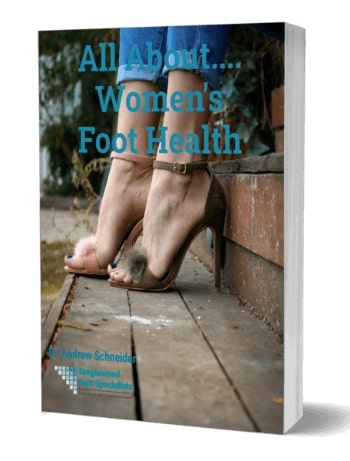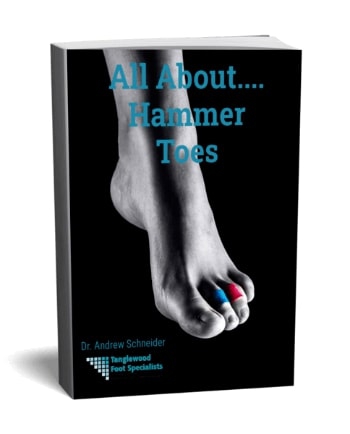If you're serious about exercise, I know you already work some sort of stretching into your workout routine. I'm hoping you've read my blogs on dynamic vs static stretching. But if you haven't? No worries! Even a quick hamstring stretch before and after a run can go a long way towards preventing injury. And, lucky for me, most people accept this fact.
So that's all well and good for your calves and hammies. But here's where I hit a wall with my patients' stretching story: your lower extremities. Or, more specifically, I get funny looks when I start talking about stretching your toes.
Are you doing that exact same thing? Stop a moment and hear me out. Because toe stretching is a real thing! In fact, it’s an absolute must. And this post will tell you why.
Why Toes Need Stretching ![benefits of toe stretching]()
Have you ever noticed that your toes turn up, without any effort on your part, as soon as you take off your shoes? The reason why is usually tightness in the toes.
If this is your problem, you may even be able to see your tight toe tendons pulling back on your little piggies. And that's a problem. Because tightness in your toes can also cause your toes to deform. Then, they can shift outward or even crunch up permanently, leaving you with hammer toes.
Common Causes of Tightness and Toe Deformities
Are you wondering why or how your toes get tight? There are a few possibilities. But these are the most common offenders.
Wearing Shoes
Tight shoes scrunch or move or toes into unnatural positions. High heels, can push the toes upward into a bent shape. The problem gets even worse when the shoes are pointy and narrow in the toe box. Because this forces your toes into even more uncomfortable positions. Now, once in a while, you can get away with this sort of pinching. But if your toes stay in these unnatural positions for too long? Well, that's when trouble begins. Soon, your muscles tighten and lock up the toes in that shape. Then, overtime (and without some help from me) they can stop returning to their normal lengths and shapes. At this point, you'll notice deformities.
Walking Styles
How you run--or your stride--affects your risk for injury. And the same is true when it comes to walking. Many people simply clomp down their feet with each step. But you should work all the muscles involved in your movement. (That means you should try pulling your toes and forefoot downward during the weight-bearing phase of your stride.) What happens if you don't? Well, your muscles aren’t properly engaged. As a result, your toes get a stetch upwards. But they never receive the counter-balancing downward stretch. And that leaves you with some tight and overworked tendons. Ouch!
Turn Out
No, I'm not prepping you for ballet class. I'm talking about your foot position when you take a stroll. When you walk, your toes are supposed to face forward, but not everyone has proper positioning. If your feet turn out when you walk, the bottom of your foot doesn’t absorb the force of your “push off.” Instead, the side of your big toe takes that major hit. Over time, that force can cause your big toe to drift in towards its neighbors. (This could spell the beginning of a bunion.) So, if you don't stretch your toe to counterbalance this effect, the big one may not return to its normal spot without medical intervention.
Foot Structure
If you have feet with arches that roll down ward while you walk, that motion pulls your ligaments and tendons in all the wrong directions. Over time, this can allow your toes to buckle. And, if the pulling continues, that buckling can become rigid, and a hammertoe is the end result.
How to Stretch Your Toes
Lateral toe stretching is a common yoga practice. You can also get the same effect with toe spreading devices. But I find that the results aren't as effective at preventing complications. Or as likely to deliver the three surprising benefits of a toe stretching practice:
1. Reduced foot pain
Stretching your toes elongates and relaxes the muscles, preventing painful spasms and contractions. When combined with toe strengthening exercises, these stretches can also help prevent overuse or repetitive stress injuries. And, since those are also very painful, taking a stretch is a win all around.
2. Help with bunions and hammertoes
While toe-stretching can not heal either of these conditions, they may help prevent deformities. How? Well, they can help remove some of the exacerbating factors, like pressure and abnormally aligned body parts. In this way, taking a toe stretch could prevent these deformities. Or at least slow down the progression toward bigger problems.
3. Morton’s Neuroma
Toe-stretching also can help ease pain from Morton’s neuroma. How could that be? Well, this painful nerve irritation gets worse when you squish your toes and feet into tight and/or pointy shoes. (That's why I tell you to limit your time in these torture devices.)
But, if you have to wear tight shoes fairly often, toe stretching can undo at least some of the damage. Now, you can always take the lazy way out and use a store-bought toe-stretcher. But I recommend putting in a bit more effort. So try these 5 toe stretching exercises from Healthline.com before you take out your wallet. And let me know how your toes and feet feel afterward!
· Take your toes in your hands and bend them all downward, to stretch the top of your foot.
· Take your toes in your hands and bend them all upward, enough to feel a nice stretch in the bottom of your foot, not just the toes.
· Pull each toe apart from the next.
· Pull the little and big toes away from each other at once, restoring healthy width to the front of the foot.
· Pull any toes that are bent-up until they are back downward. Pull bent-down areas gently straight, and pull curled toes straight out to restore straight length.
Have you been stretching your toes, but they still feel tight? Are you worried that your toes have already shifted, and a bunion or hammer toe is just around the corner? Don't sit at home worrying about brewing trouble. Instead, make an appointment with our office right away. When I see you with small or early-stage deformities, I can use minimally invasive treatments. And they'll do a great job at preventing small problems from becoming big and painful ones!





















